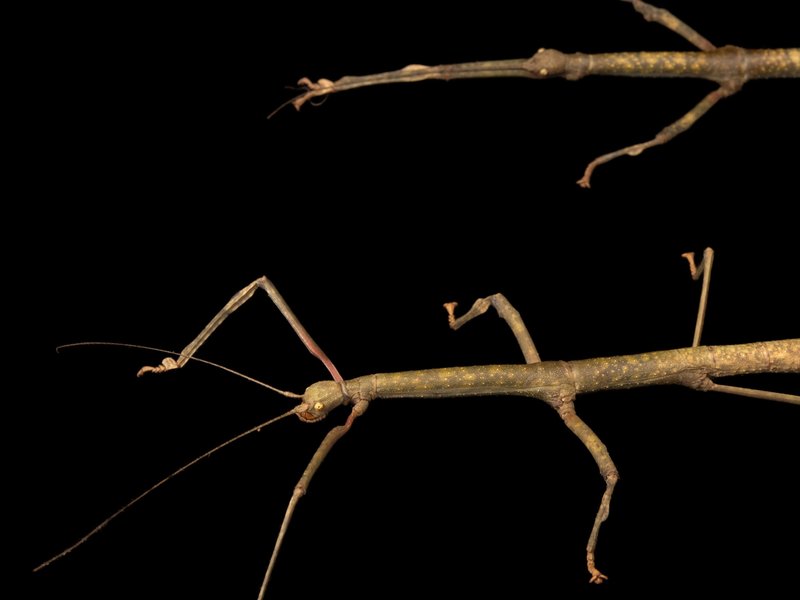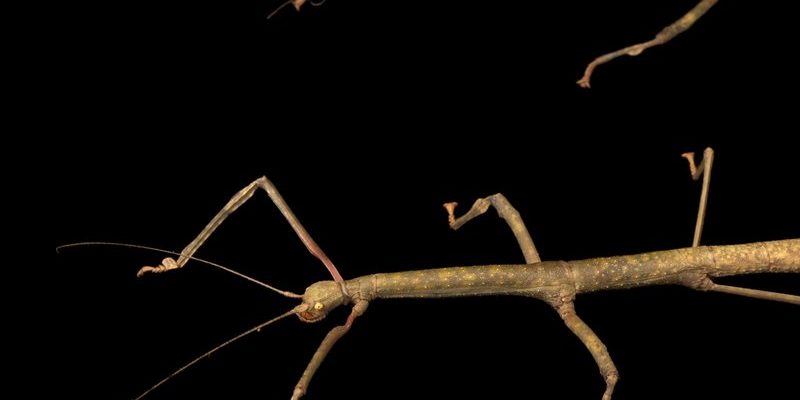
Stick insects, also known as phasmids, sport remarkable camouflage that helps them blend into their surroundings. This unique adaptation is their primary line of defense against predators. You might imagine them as the ninjas of the insect world, quietly hanging out in trees and bushes, avoiding attention. Let’s peel back the layers of fear and curiosity surrounding these insects to uncover the truth about their behavior and potential risks to humans.
What Are Stick Insects?
Stick insects belong to the order Phasmatodea, which includes about 3,000 species worldwide. These insects have a striking resemblance to sticks, branches, or leaves, making them masters of disguise. They use this camouflage to survive in the wild by evading predators like birds and other hungry animals. The appearance of stick insects can vary remarkably; some are long and slim, while others may be short and bulky.
These insects primarily feed on leaves, munching away on a diet that supports their growth and reproduction. Interestingly, stick insects can be found across various habitats, including forests, grasslands, and gardens. Their preferred environments usually provide ample foliage for both camouflage and sustenance. This unique combination of features makes stick insects not just ordinary bugs; they’re fascinating examples of adaptation and survival in nature.
Are Stick Insects Poisonous?
One common question about stick insects is whether they are poisonous. The good news is that stick insects are generally not toxic to humans. Unlike some other insects that can deliver painful stings or bites, stick insects are completely harmless. They don’t possess venom, and their primary defense mechanism is to remain still, relying on their camouflage to hide from threats.
You might be wondering if it’s safe to handle them. While it’s perfectly safe to pick up a stick insect, they usually prefer not to be disturbed. If you do handle one, be gentle. Their bodies are delicate, and they can sometimes drop limbs as a defense. This is a normal response in the insect world, similar to how some lizards can lose their tails to escape predators.
Potential Risks of Stick Insects
Although stick insects are not dangerous in a traditional sense, they can still pose a few indirect risks. For instance, if you have a pet that enjoys chasing insects, a stick insect might not fare well in that scenario. Dogs or cats might see them as potential toys or prey, leading to accidental harm. It’s essential to monitor your curious pets if you have stick insects in your environment.
Another consideration is allergies. While rare, some individuals might experience allergic reactions to insect bites, even from harmless species. It’s always wise to observe your body’s reactions when encountering new species, especially if you’re allergic to other insects. You might also want to avoid handling stick insects if you’re concerned about potential irritation from their legs.
Stick Insects and Their Role in Ecosystems
Stick insects play a crucial role in their ecosystems. As herbivores, they help maintain the balance between plant life and the animals subsisting on them. By feeding on leaves, they contribute to the health of their environment, preventing overgrowth in certain areas and promoting biodiversity.
Moreover, stick insects serve as food for various birds, reptiles, and mammals. Their existence supports the food web, illustrating how interconnected all living things are. You might draw parallels to a well-tuned machine; each part has a role, and if one component is removed, the entire system can be affected.
Keeping Stick Insects as Pets
If you’re considering keeping stick insects as pets, you’ll be pleased to know that they make low-maintenance companions. They don’t require lots of space, and their feeding needs are simple—just a steady supply of fresh leaves. You can provide them with branches in a terrarium to mimic their natural habitat, allowing them to thrive in a safe environment.
Make sure to research which species are suitable for pet ownership, as some can be more elusive than others. You’ll also want to consider their lifespans, as some species can live several years. Setting up a proper habitat is key to ensuring their wellbeing. Here’s a quick checklist for creating a comfortable home:
- Terrarium with proper ventilation
- Branches and foliage for climbing and hiding
- Fresh leaves for food
- Humidity and temperature control
Finding Stick Insects in the Wild
If you’re interested in spotting stick insects in their natural habitat, look for them in wooded areas and gardens. They tend to be more active during warmer months, making spring and summer the best times for a hike or nature walk. To spot one, simply look closely at the trees and bushes. Their incredible camouflage can make them nearly invisible—like a game of hide-and-seek!
When searching, try to be quiet and gentle. This way, you won’t startle them into fleeing. You might feel like a nature detective as you scan the branches for these elusive insects. Taking a moment to appreciate their beauty and complexity can deepen your connection to nature.
So, is the stick insect dangerous to humans? The answer is a resounding no! These remarkable creatures pose no threat to us. Instead, they invite us to marvel at their unique adaptations and roles in the ecosystem. While they might not be the most glamorous insects, their incredible camouflage and peaceful nature make them a captivating subject of study.
If you’re ever curious about these “stick buddies,” remember that understanding them enriches our appreciation for the world around us. Next time you see a stick insect, take a moment to acknowledge its important part in the environment. After all, every creature has a story worth telling, even if it’s a little hard to find!

